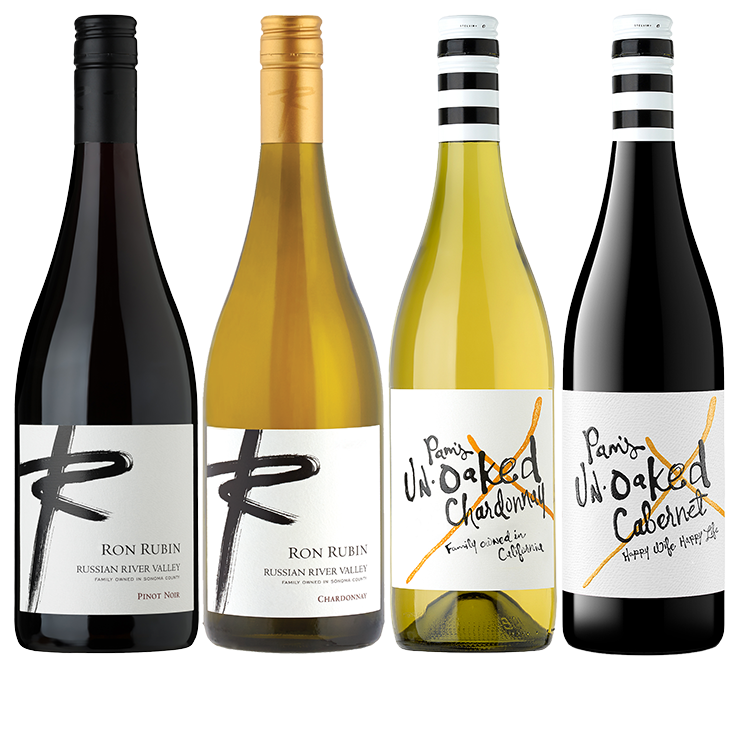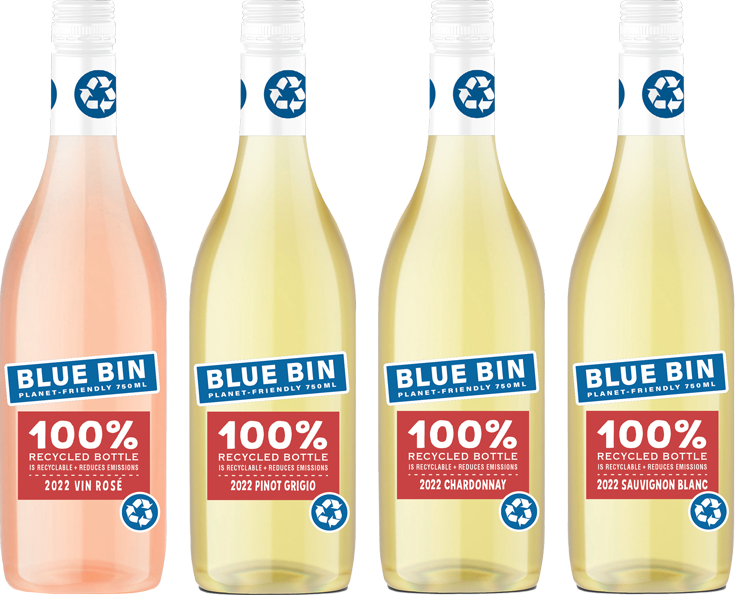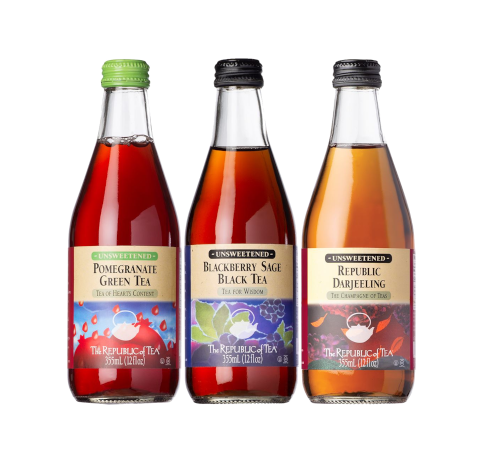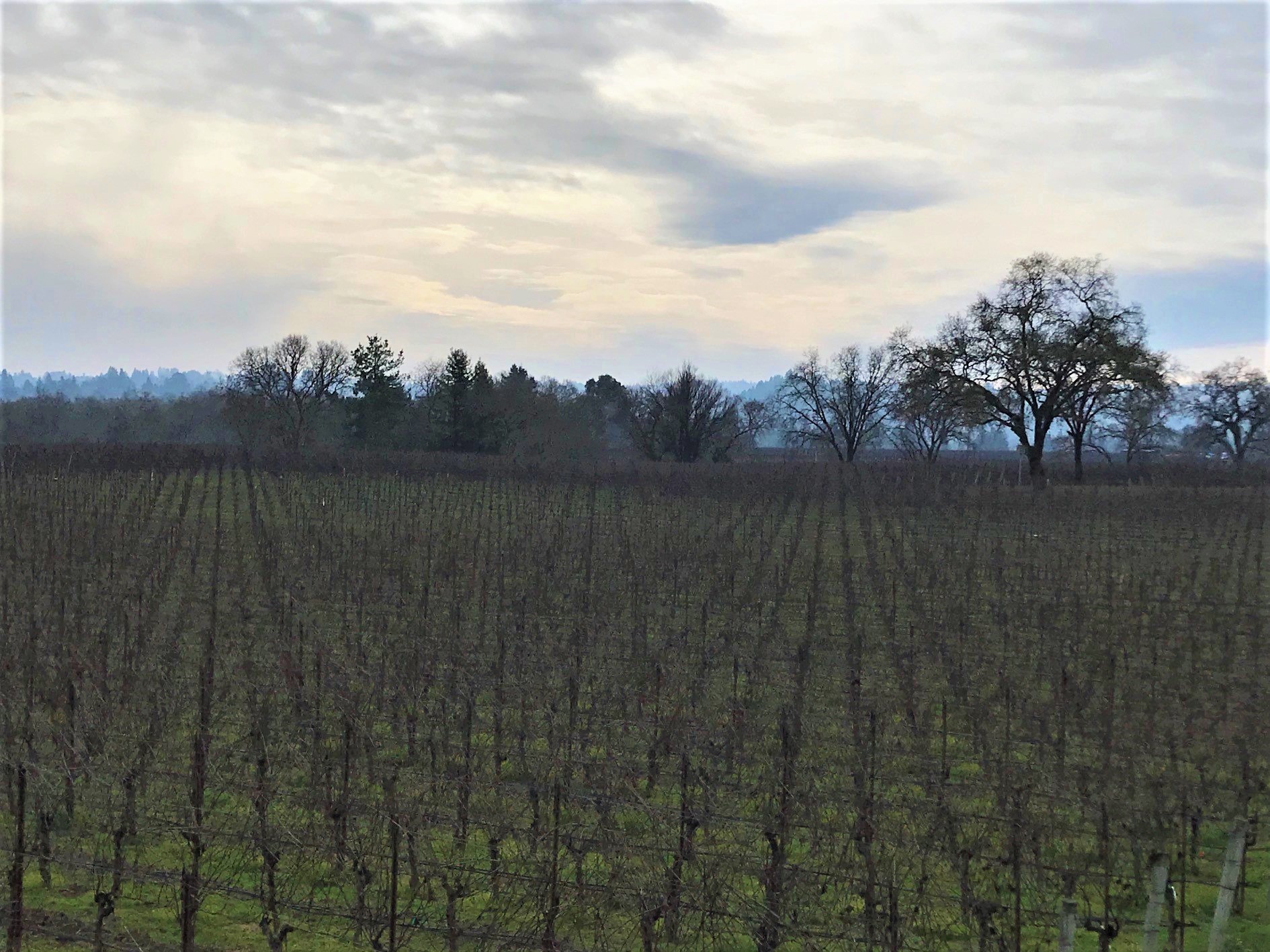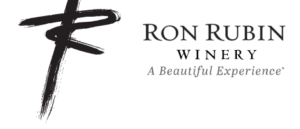VINEYARD UPDATE
Our grapevines are deep into their dormant state, so the relatively cold and dry conditions that we experienced in January weren’t bothering them at all. Additional rain would certainly be welcome, but the rain season is far from over, and the dry days are allowing us to make good progress pruning the vines.
In last month’s Notes, I promised you a closer look at the details of pruning a wine grape vine. Alvaro Zamora, our Vineyard Manager, will be your guide to the task that consumes much of his time during this season.
CANE PRUNING PINOT NOIR
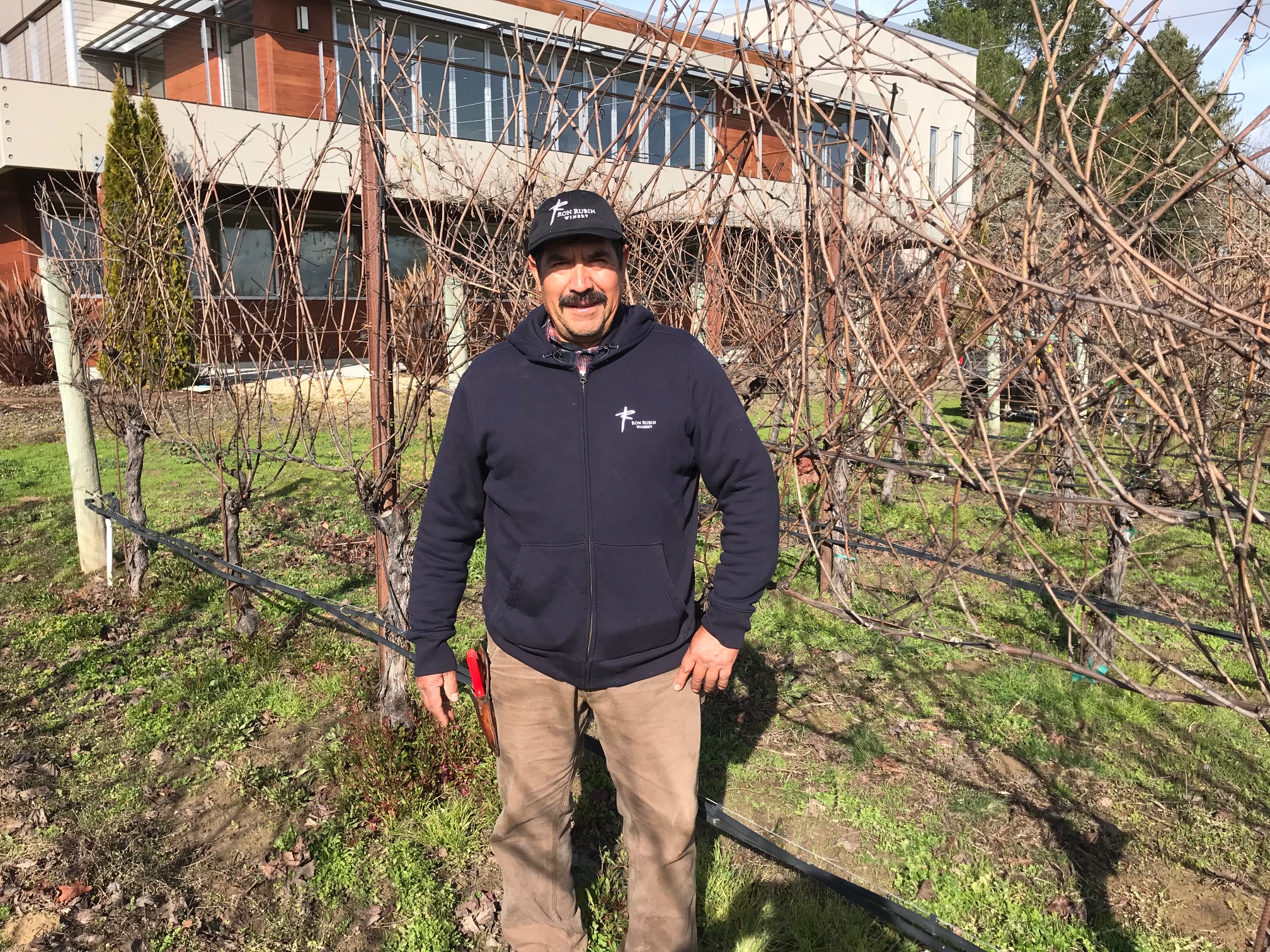
After the leaves have dropped off the vines, in late fall, we are given a great look at the perennial parts of the vine that remain. This “X-Ray” view we get of the leafless vineyard is great at exposing relative strength of each vine and providing insight into the coming year.
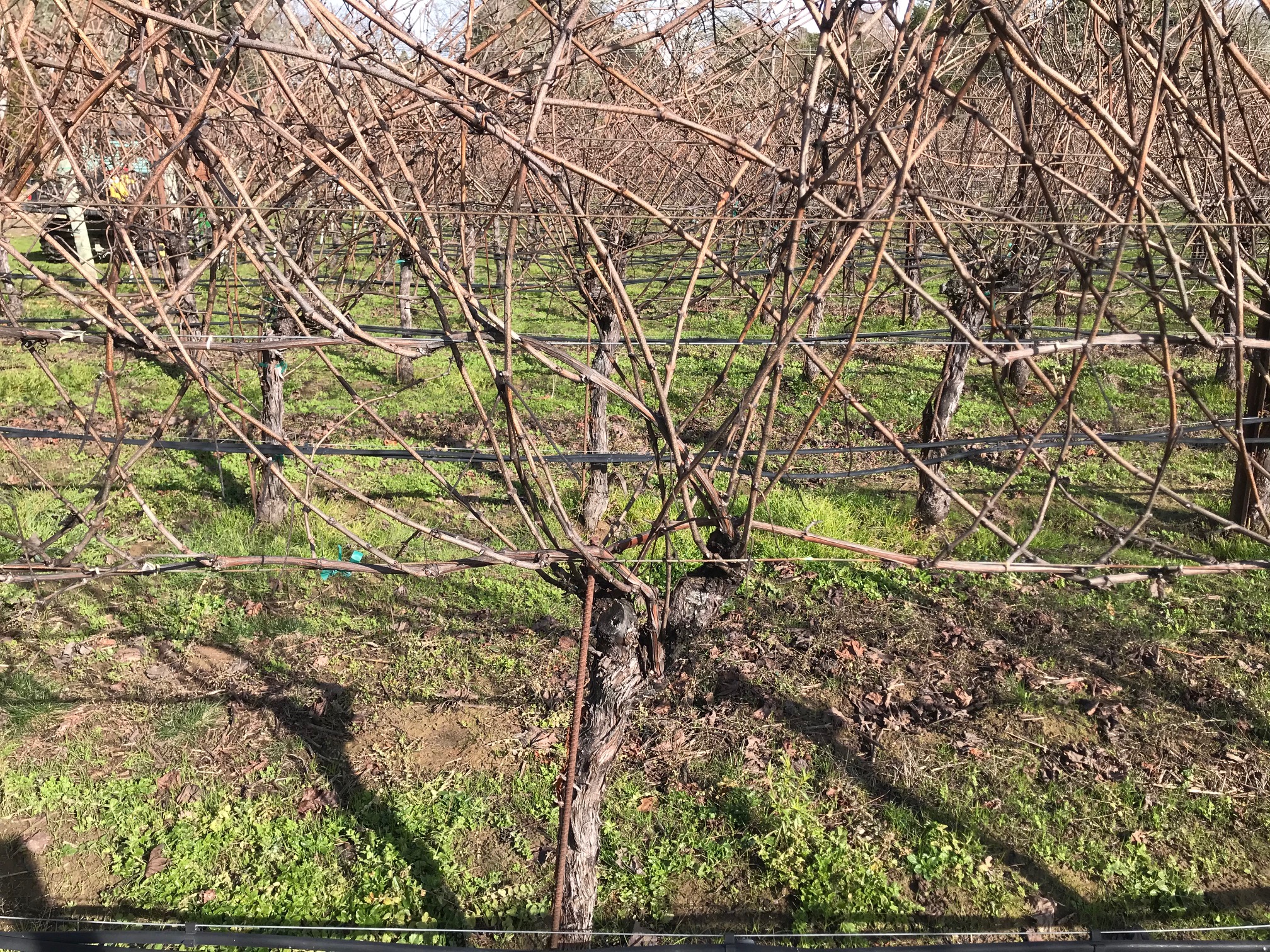
As you can see in this photo, there’s a lot a lot of vine growth that occurred last year, and most of it is unnecessary in the coming year. In fact, leaving too much wood would be detrimental to the quality of the 2020 crop, so we’ll take about 90% of last year’s canes off by pruning.
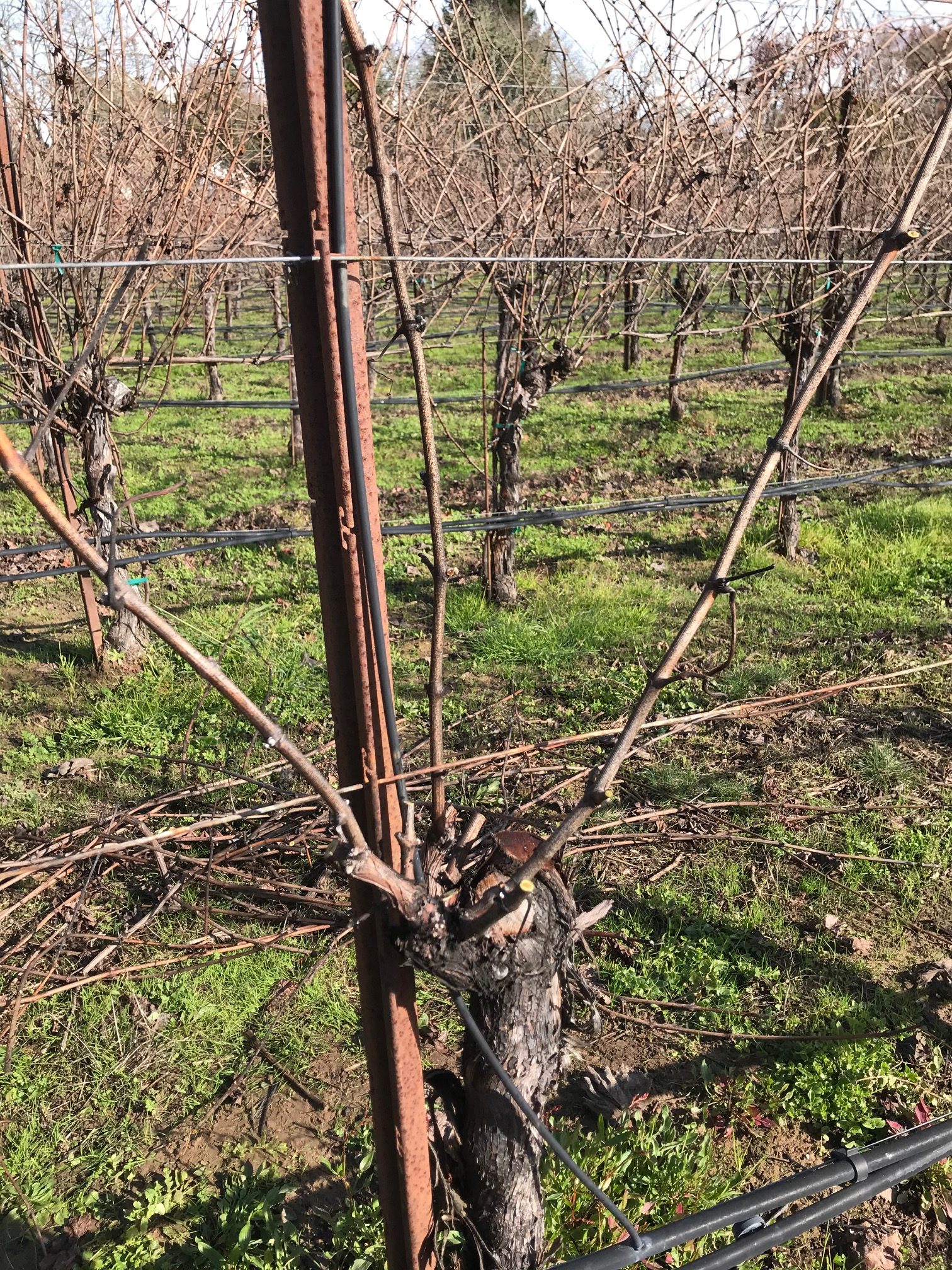
The first decision that Alvaro makes is determining which canes to remove completely. Any that are short and have not reached the full height of the trellis are removed. Then, all thin shoots (less than a pencil’s thickness) are also removed. These thin shoots will not have sufficient carbohydrate reserves available to the growing buds, early in the year, resulting in uneven growth.
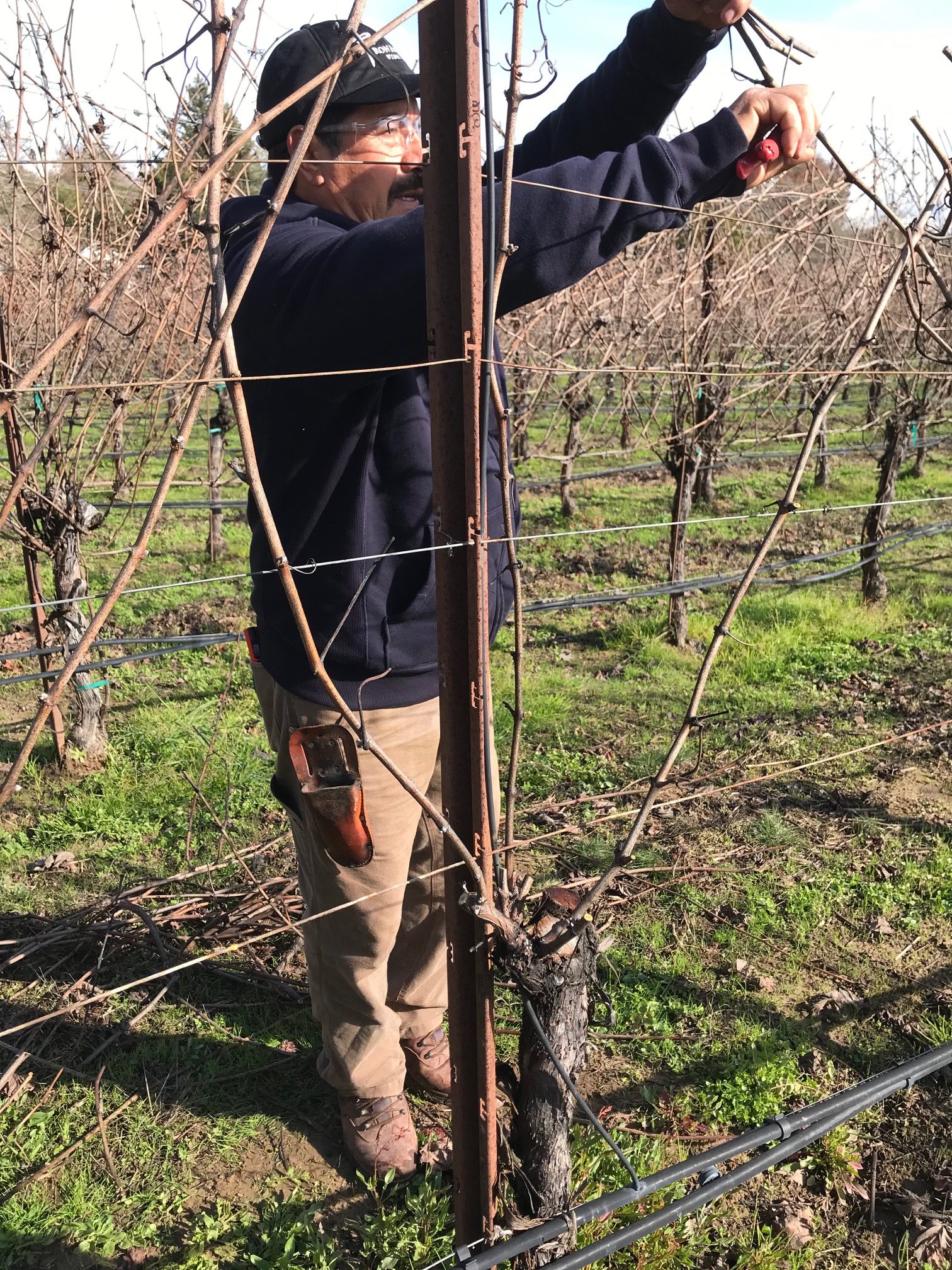
Alvaro refers to the culling of the unwanted canes “Selection”, and he makes unique decisions for every vine! This is where an experienced vineyard manager can truly make their mark, and ensure the best quality grapes from the vineyard during the following vintages.
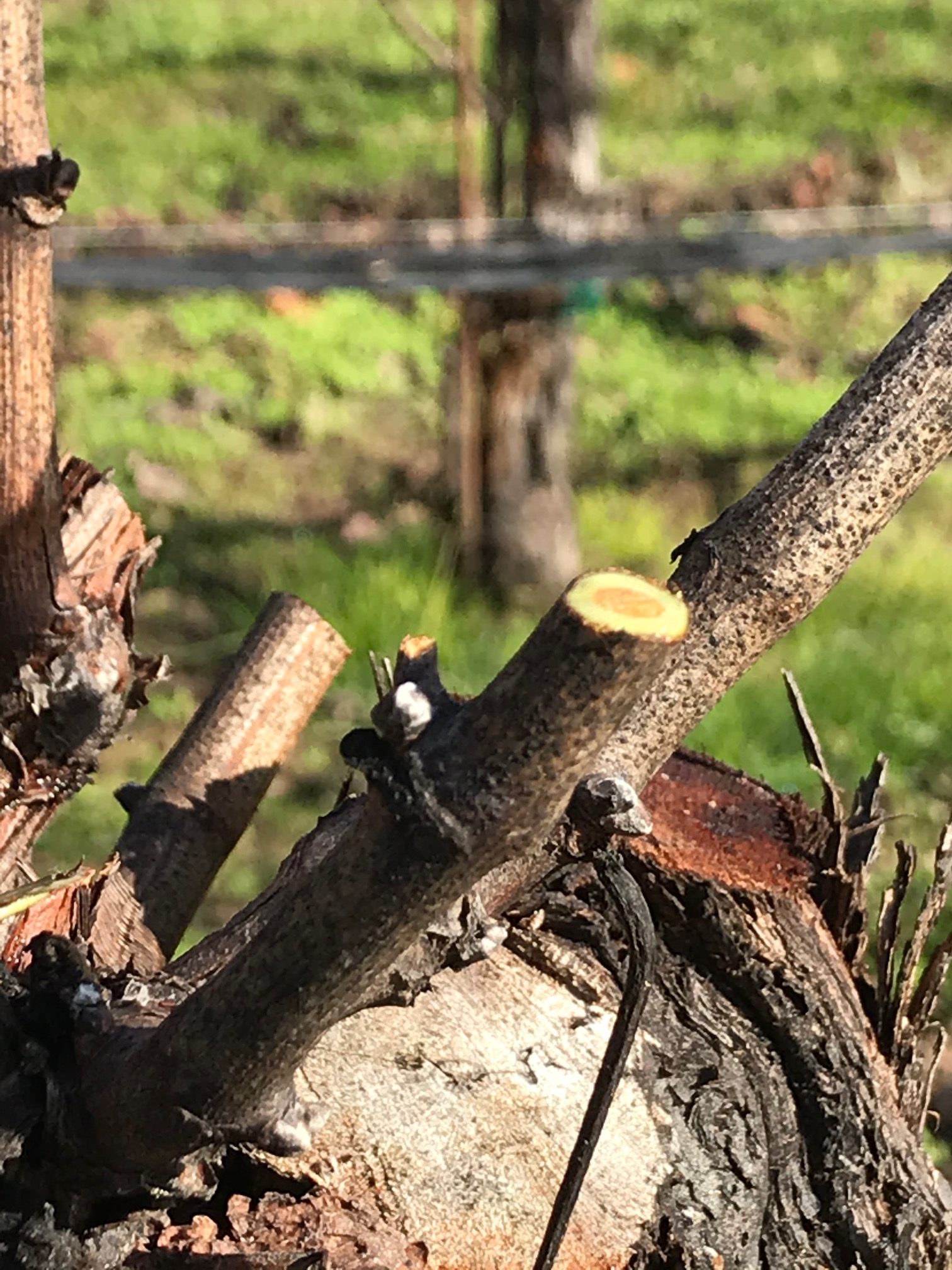
Not only is the selection of canes important, but the technique of pruning must take into account the health of the vine. Here you can see a pruning cut that is made using a well-sharpened shears, and made at a slight distance from the nearest bud. If the cut is made too close to the bud, it will dry out and kill the bud.
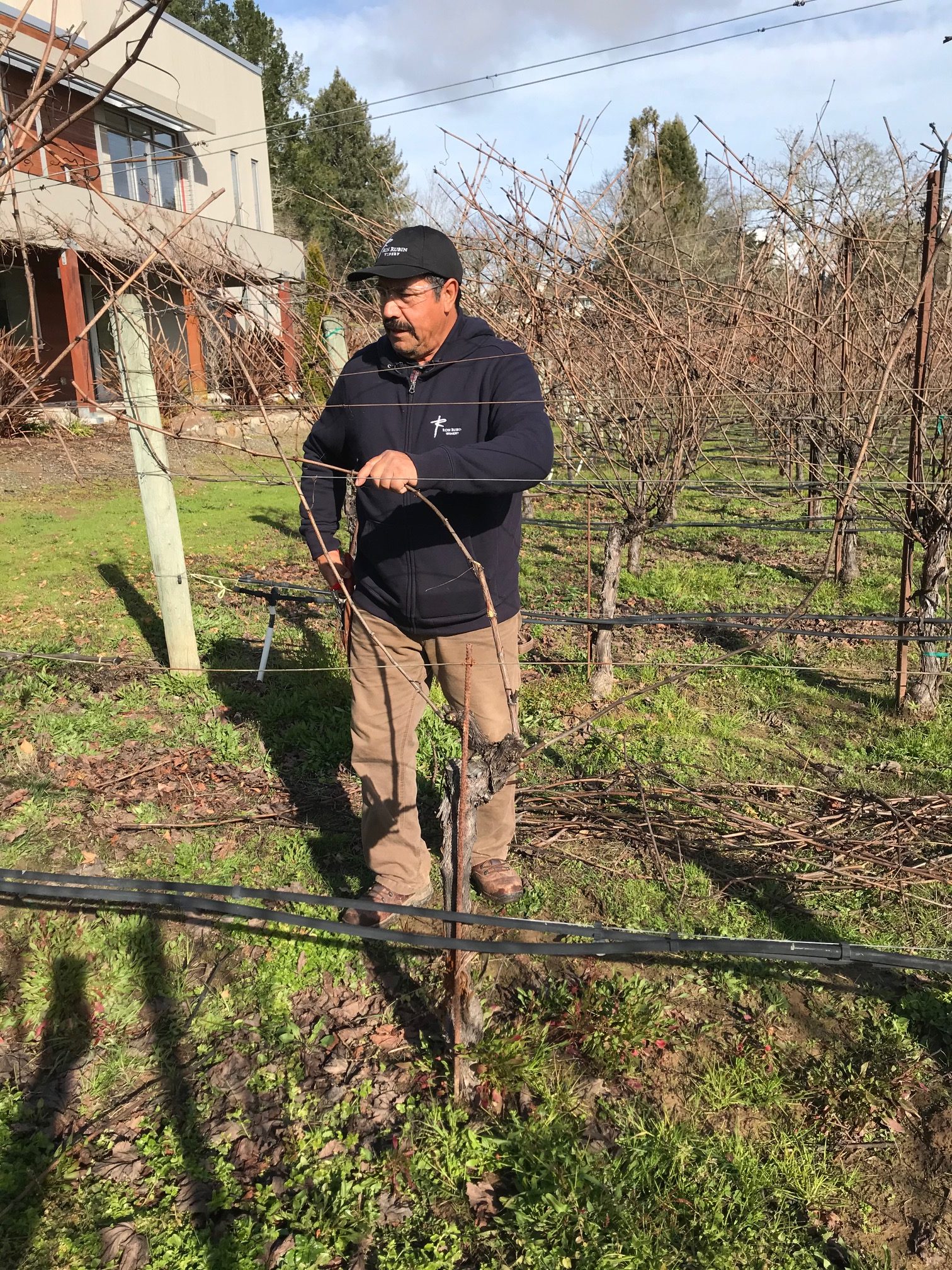
We have certain guidelines for the number of fruiting buds left on each vine, after pruning. For our site, and considering the age and vigor of our vines, 24 buds per vine gives us a good balance between yield and the canopy growth of the vineyard. Other vineyard sites may warrant more or fewer buds, to achieve this balance.
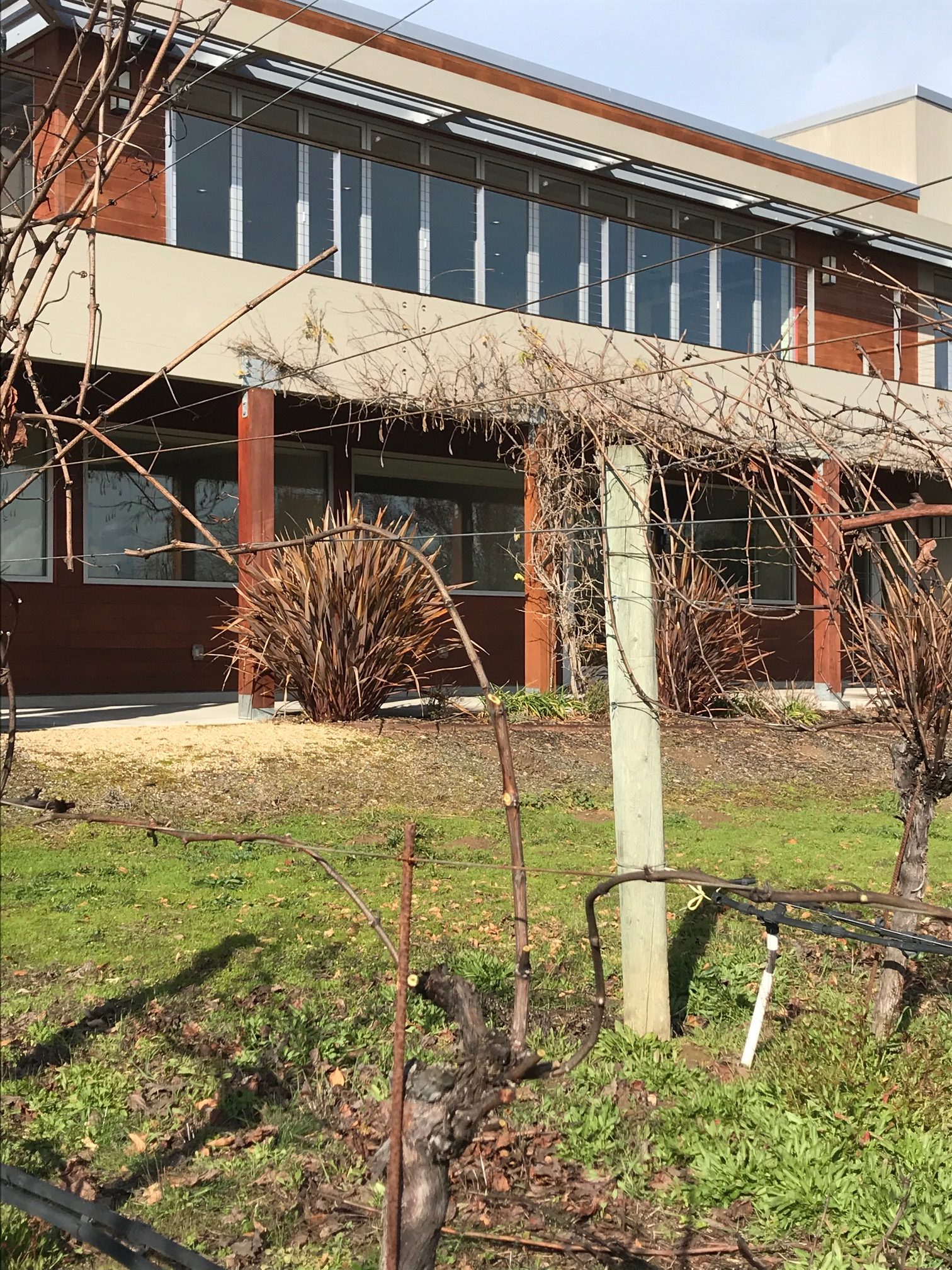
Alvaro assesses the direction that each remaining cane has been pointing, and gently coaxes them onto supporting trellis wires. Too sharp a bend, and the cambium (which transports water and nutrients through the cane) can be damaged, leading to less vigorous growth.
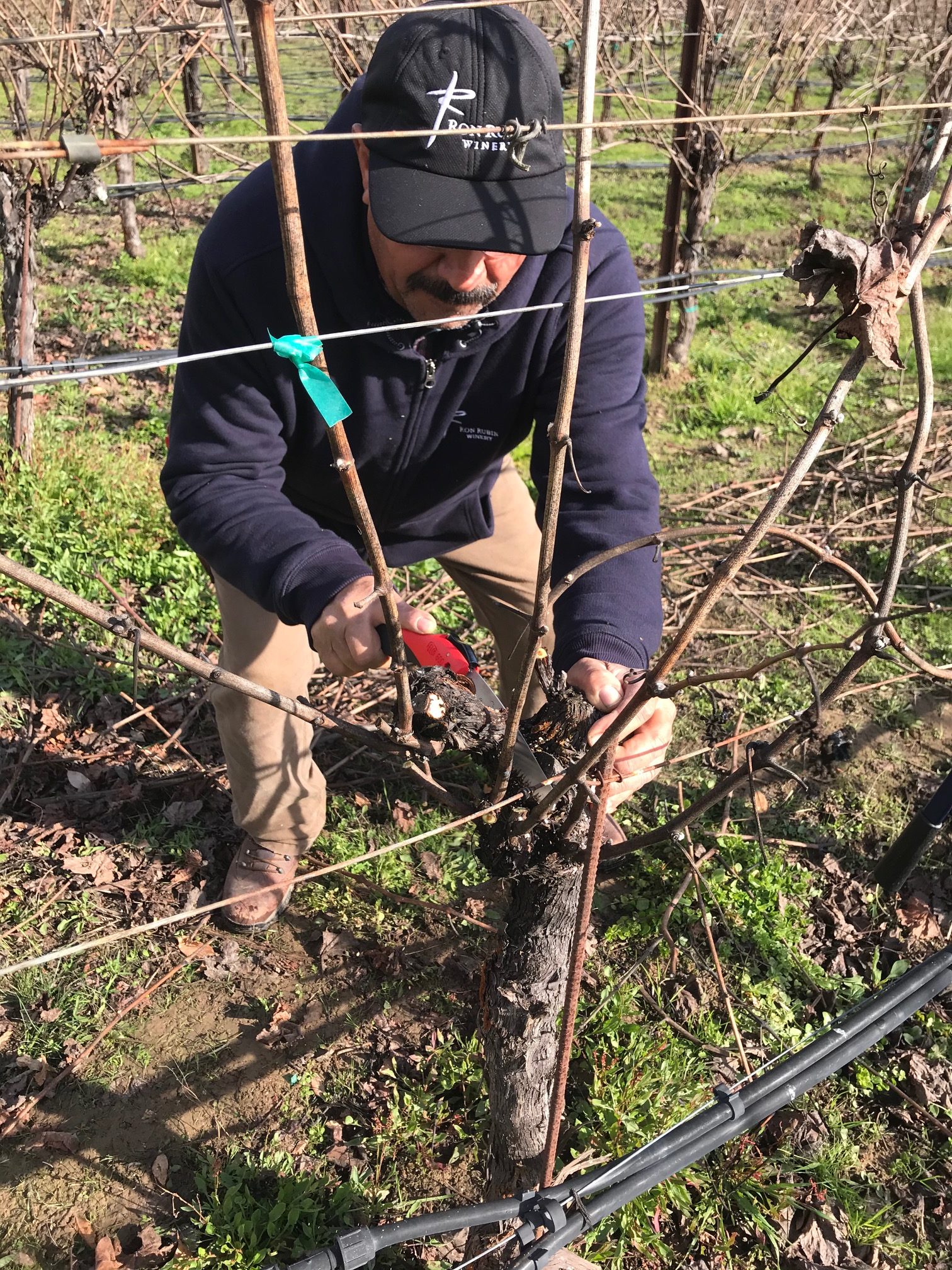
As we transition our vineyard from cordon pruning (which features permanent vine “arms”) to cane pruning, Alvaro removes the remaining stumps of these old arms. At this point, several years into the transformation, most of the cordons have been removed.
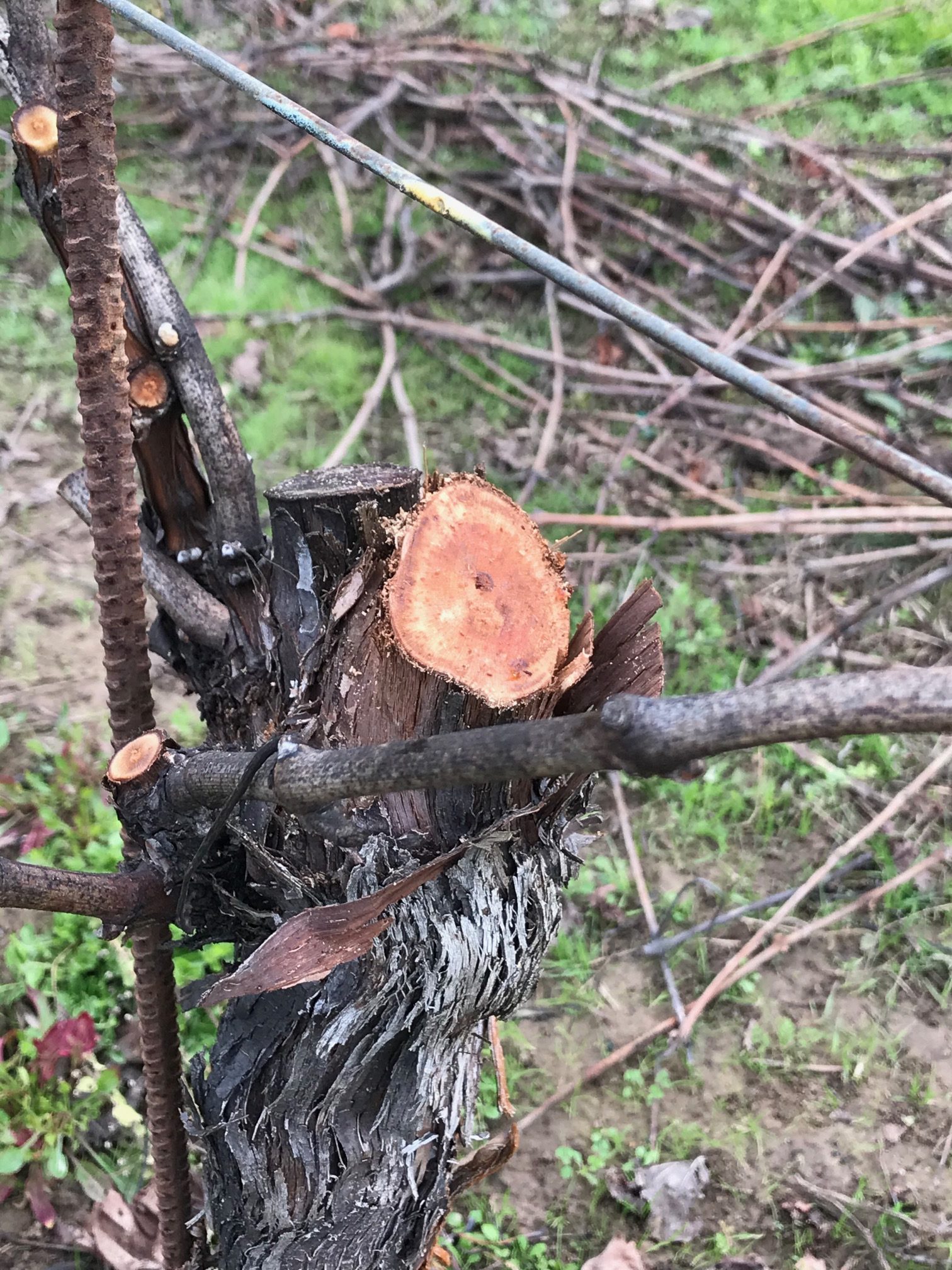
This is what we like to see! No symptoms of Eutypa, a trunk disease, in our vines when we cut back to the trunk. The wood is healthy, with no dead areas in the exposed cut.
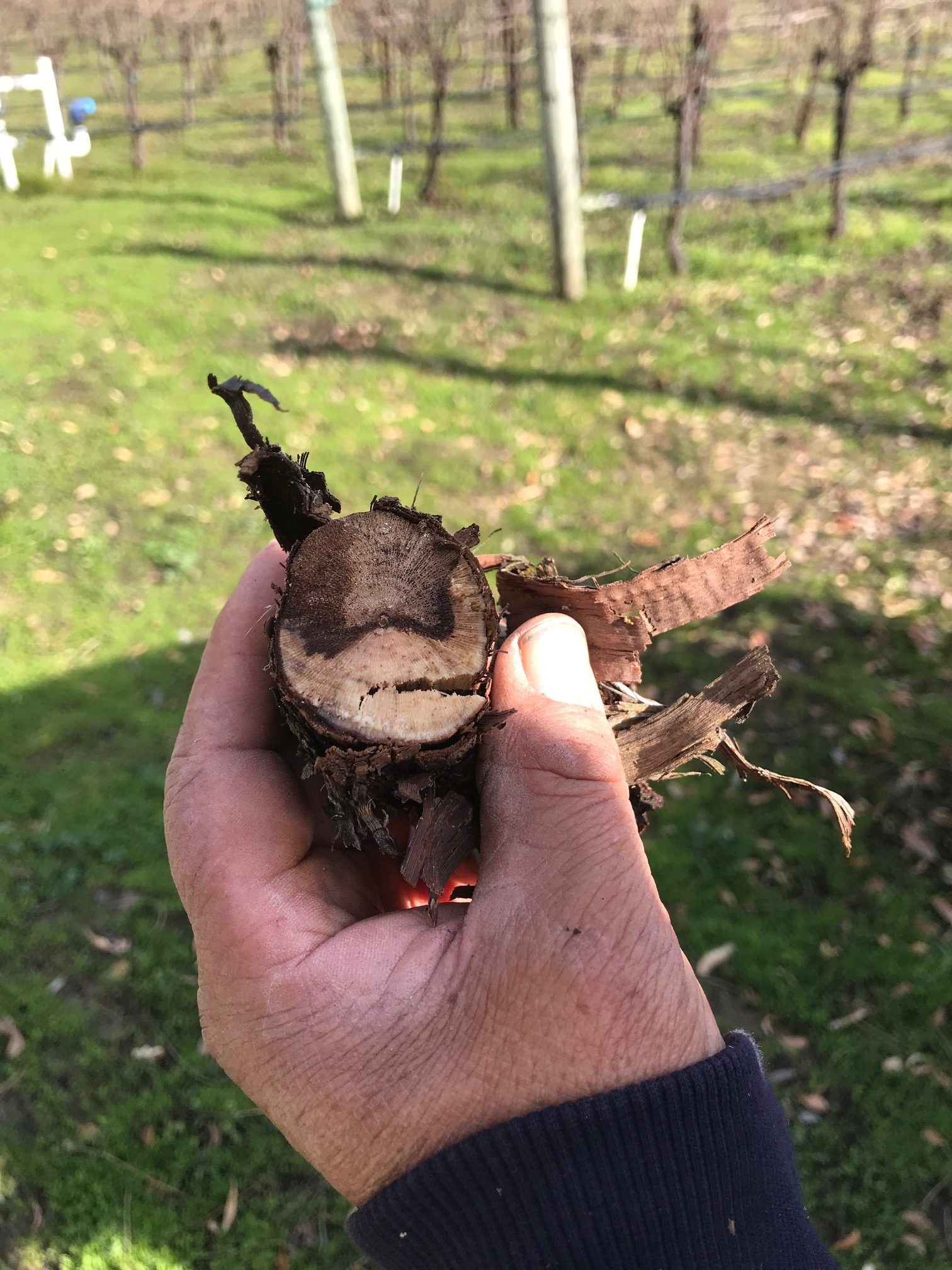
Here’s a photo showing the dead area of wood (a wedge-shaped, dark patch) that results from Eutypa infection. Eutypa is a significant challenge in the Russian River Valley, and why we invest so much time cane pruning to prevent it from gaining a foothold.
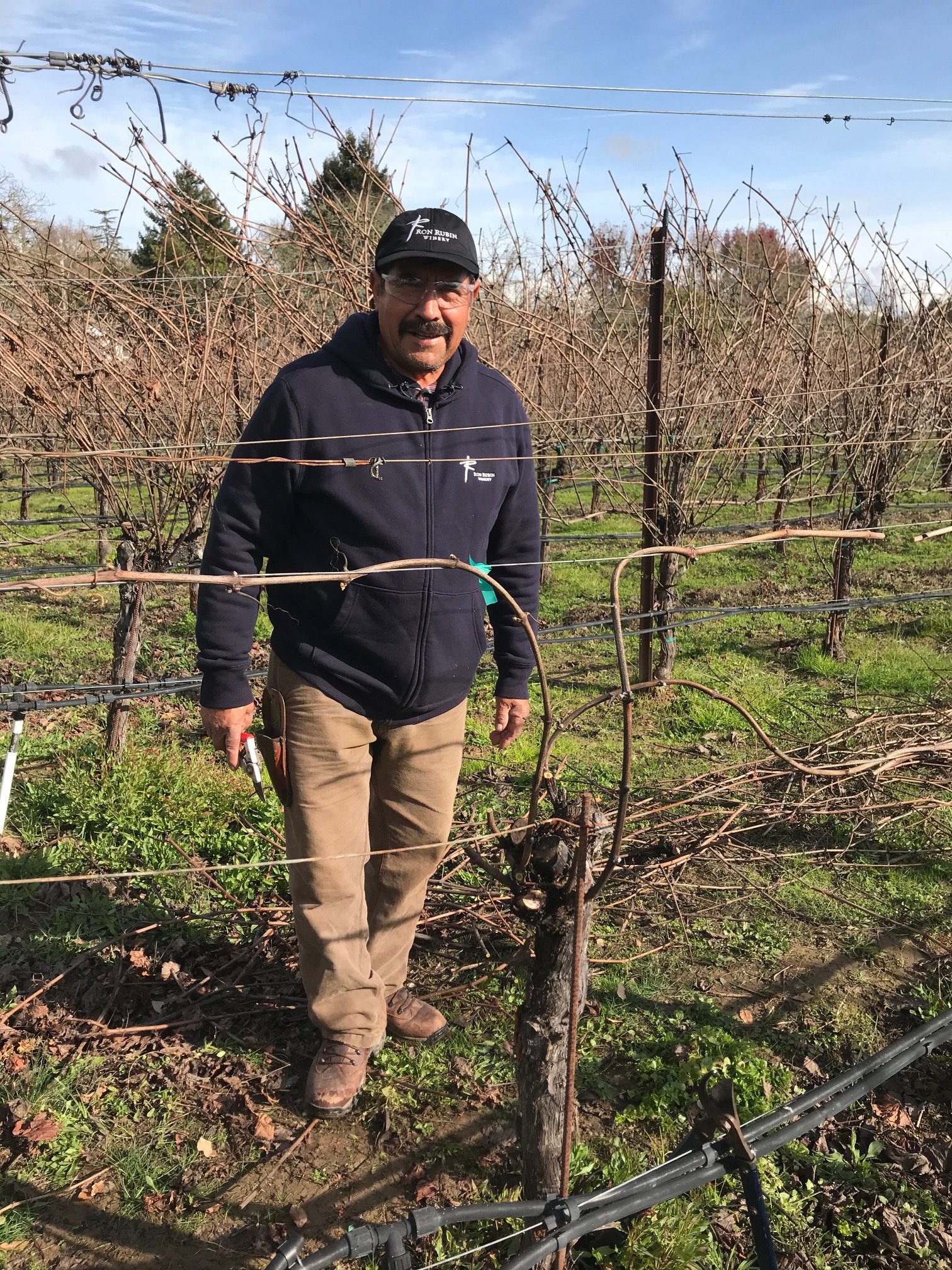
Here’s a vine, with the three best canes selected, pruned to length, and laid down onto the trellis wires. We’ll finish by securing the canes to the wire using vine ties.
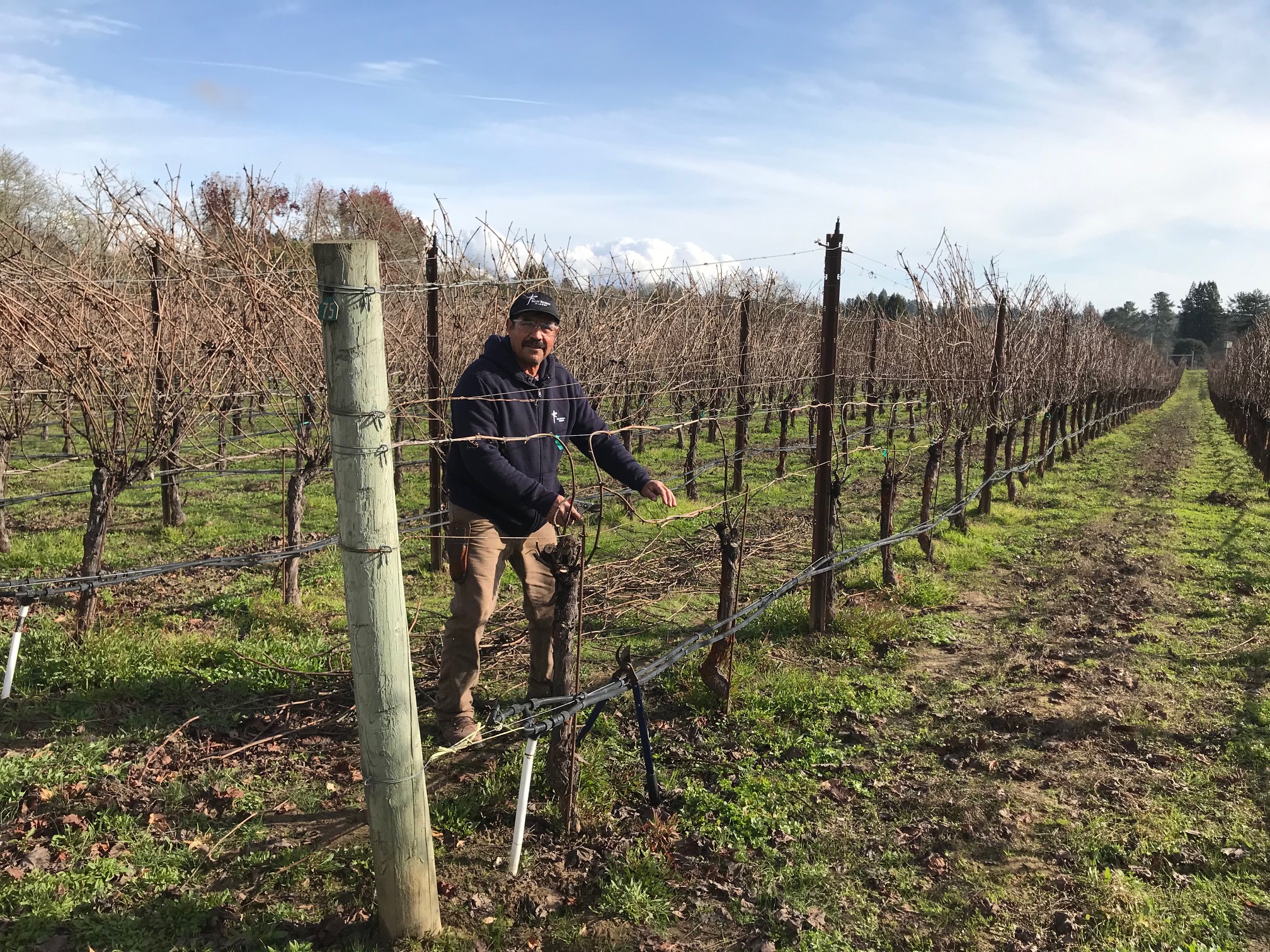
Only 12,244 vines to go! Pruning is a big project that consumes most of the winter months.
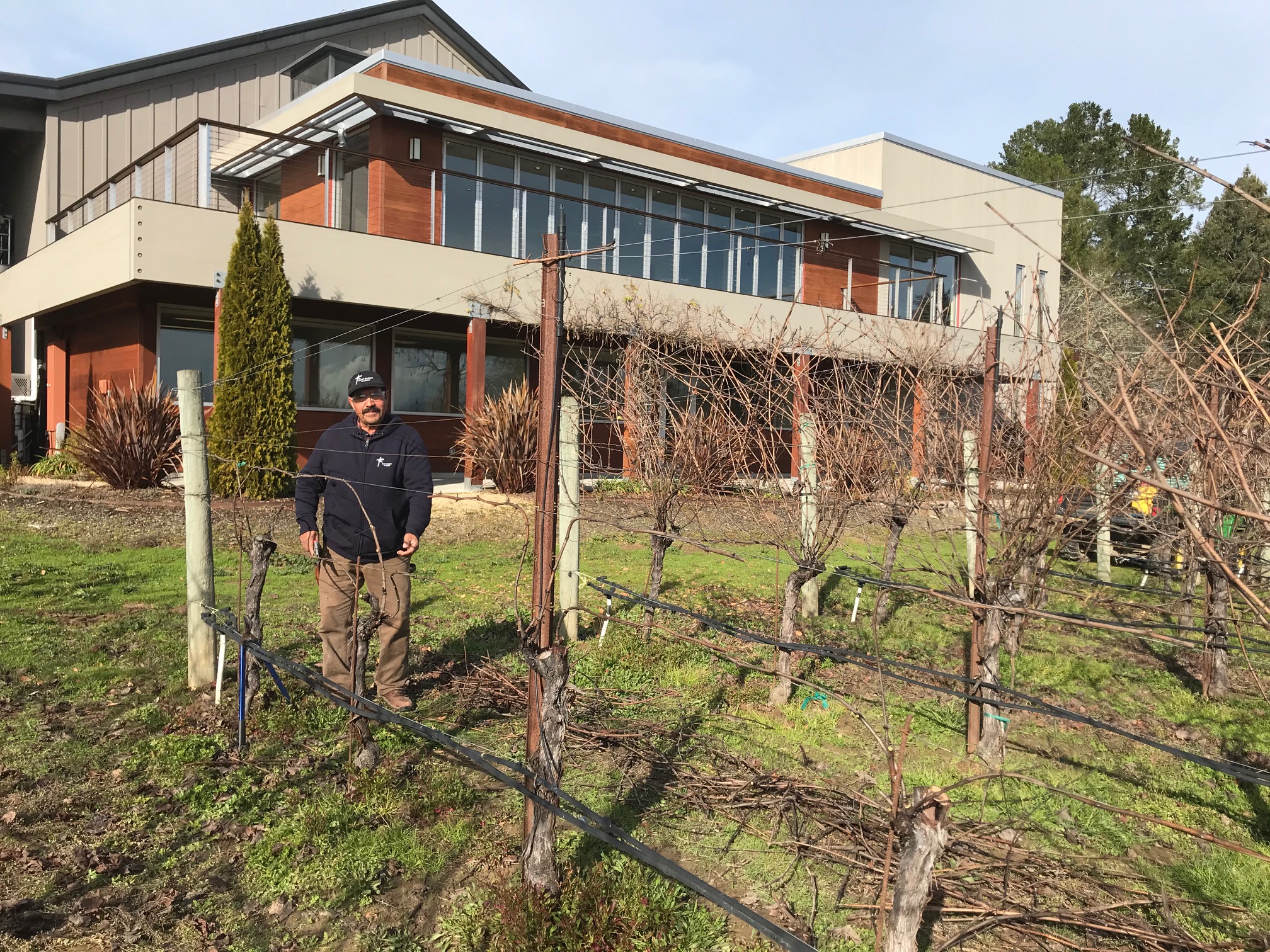
Alvaro’s skills are easily apparent in his work at Ron Rubin Winery. He has over 30 years experience in local vineyards, including planting our own Estate vineyard in 1999. Alhough grapevines are resilient, and can withstand some mistakes in pruning, a focus on balance and uniformity will result in the most exciting wine grapes. We know that the vines at Ron Rubin Winery are in great hands!
Cheers!

